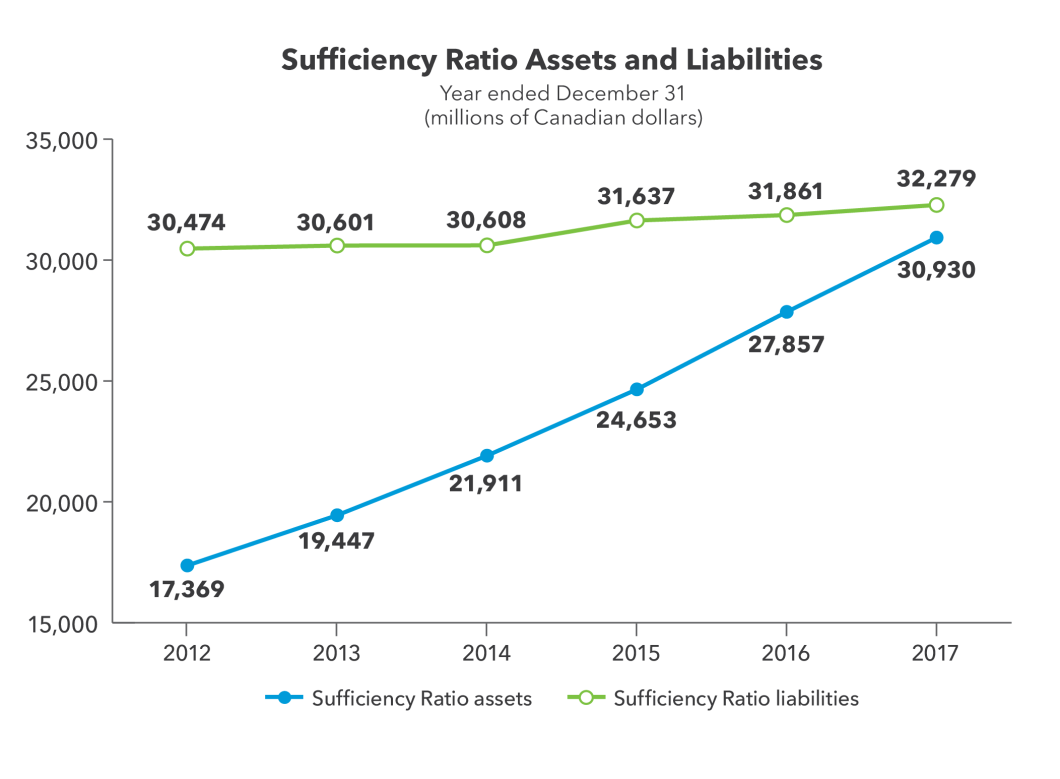Our 2017 results show we have made progress improving outcomes for people injured at work and strengthening our financial position.
The Annual Sufficiency report highlights our progress reducing the unfunded liability and provides our year-end Sufficiency Ratio, which measures whether there are sufficient funds to meet the WSIB's future expected benefit payments.
At year-end 2017, our unfunded liability on a Sufficiency Ratio basis decreased to approximately $1.3 billion, compared to $1.8 billion last quarter and $4.0 billion at year-end 2016.
This corresponds to a Sufficiency Ratio of 95.8 per cent on December 31, 2017, compared to 87.4 per cent at the same time last year, meaning we have 95.8 per cent of the assets required to meet our future obligations.
The graph, below, shows the Sufficiency Ratio assets and liabilities over the last six years:
This progress in our financial position was made while we continued to improve outcomes for those injured at work. Some highlights this year are:
- For the second year in a row, more people who completed a Work Transition plan went on to find employment (88 per cent in 2017); and
- The percentage of claims that continued to require benefits at 72 months was 17 per cent lower in 2017 (2.0 per cent) than in 2016 (2.4 per cent). Seventy-two months (six years) is the point at which claims may be “locked in” until age 65.
At 95.8 per cent, our Sufficiency Ratio is much better than our current legislated requirement. We will continue to work towards eliminating the unfunded liability so that we can operate in a sustainable manner and be there to support people injured at work. We know this will help make Ontario a healthier and safer place to live and work.


